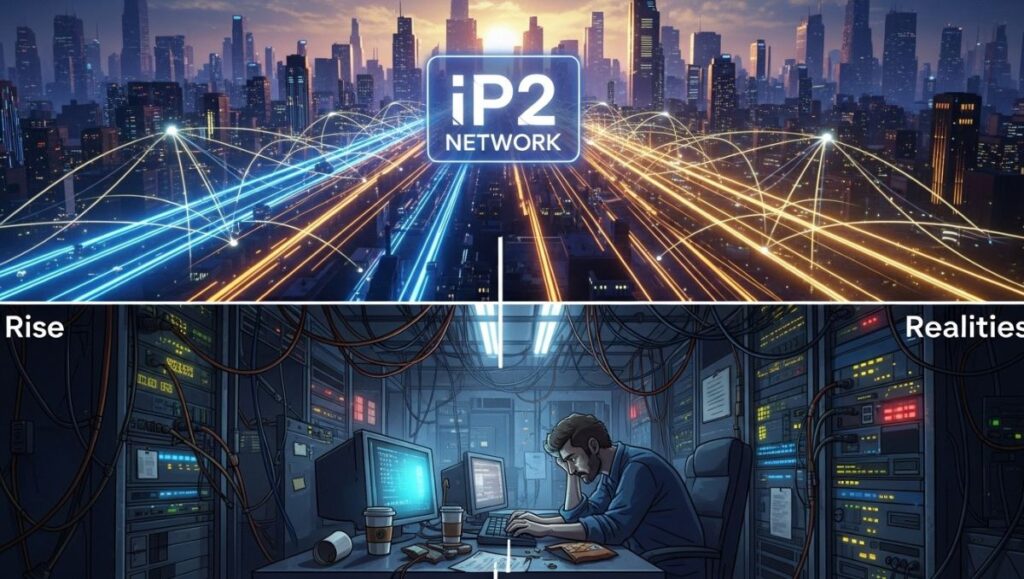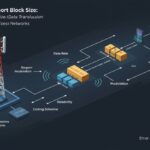What is the IP2 Network?
The term IP2 Network refers to a loosely affiliated ecosystem of live streamers, directories and communities that emerged outside of conventional streaming platform structures. Rather than being a single company or centralized website, this network functions primarily as a discovery hub or directory of creators who operate in the “IRL” (in-real-life) style of streaming.
At its core, IP2 Network provides viewers with a way to find live streams, check when creators go live, and navigate a community that places emphasis on immediacy, unpredictability and real-world interaction. Unlike a typical broadcaster platform where the host runs the show, IP2 is more of a map or index of creators, with varying levels of structure and moderation.
Origins and Evolution of the IP2 Network
The roots of the IP2 Network trace back to the IRL streaming movement—a format in which creators broadcast daily life, wander city streets, interact spontaneously with people, and lean heavily into viewer-driven content. One of the earliest influences was Ice Poseidon, who helped pioneer the format on mainstream platforms.
As some of these creators came up against higher scrutiny, bans or content-guideline enforcement, a number of fans and streamers sought alternatives. In that context, the IP2 Network arose—often described as “Ice Poseidon 2” or the next generation of that streaming culture.
In simple terms: when mainstream platform constraints became limiting, the community gravitated toward a more decentralized model of discovery and broadcasting. Over time, IP2 developed its own cultural norms, sleeker directories listing whom’s live, and a fan base that values the raw, spontaneous and less curated feel of IRL content.
How the IP2 Network Works: Structure & Mechanisms
Unlike a centralized streaming service (e.g., a single platform hosting creators), the IP2 Network functions more like a hub + spokes architecture:
-
Hub (directory/aggregation sites): These maintain lists of active streams, links to creators across various platforms, status updates (who’s live now).
-
Spoke (creators and their individual channels): Independent streamers who operate on various platforms (Twitch, YouTube, Kick, Rumble etc.). They may use IP2-style tagging or community references to signal affiliation.
-
Community & viewer interaction: These often include donation-driven content, viewer influence over the stream, IRL stunts or adventures, and a culture of immediacy rather than heavy editing.
-
Minimal central moderation: Because the hub doesn’t host all content, and creators span multiple platforms, rules and governance are looser than mainstream platforms. That decentralization gives freedom but also risk.
Typical Content and Creator Style on IP2
Creators associated with IP2 tend to engage in unscripted, on-the-fly broadcasting, often in public spaces or during real-life events. Some typical features:
-
Real-world roaming streams: walking through cities, nightlife, public conversations, travel.
-
Viewer-directed content: chat donations or prompts influence what the streamer does next (e.g., go to a new location, ask strangers questions).
-
Edgier, unpredictable formats: Because the content is less curated, it can slip into controversial territory more easily.
-
Smaller production values (in many cases): Instead of big setups, many streams are mobile, impromptu, and rely on audience interaction.
Why the IP2 Network Attracts Viewers
Several factors fuel its appeal:
-
Authenticity & rawness: Unlike polished pre-recorded videos or corporate influencers, IP2-style streaming feels more spontaneous, “you’re there live with them”.
-
Interactivity: The heavy viewer participation (chat, donations, suggestions) creates closeness between streamer and audience.
-
Alternative to platform censorship: For some viewers it’s a rebellion against mainstream platform constraints or algorithm-driven content.
-
Niche subculture appeal: The “underground” or sub-platform feel gives IP2 a cult vibe, which can be attractive to certain communities.
Challenges and Criticisms of the IP2 Network
With its freedom come risks; here are some of the major issues:
-
Minimal moderation: The lack of centralized governance means potentially harmful behavior (harassment, dangerous stunts, privacy intrusions) can occur.
-
Legal and ethical gray-areas: IRL streams often involve public filming, maybe without consent, risky locations, or behavior that might violate laws or platform policies.
-
Volatility and sustainability: Because many monetization methods (donations, crypto) are less stable and creators may face bans or platform shifts, the ecosystem can be unstable.
-
Viewer risk: Viewers may be exposed to unfiltered content, which might be offensive or unsafe. The “anything goes” nature is not suitable for all audiences.
-
Reputation issues: Because some creators push boundaries for views, the network can develop a reputation for toxicity or drama-seeking.
How to Participate (as Viewer or Creator)
For viewers:
-
Approach with discernment: Expect less moderation, more unpredictability.
-
Know the platform: If the stream is linked via IP2, it may be hosted on less conventional platforms or require donation-based support.
-
Stay safe: Public IRL streams may involve risky locations or behavior; maintain personal boundaries and logic.
For creators:
-
Understand your platform: Even if listed on IP2, you’re still subject to the rules of the platform you stream on.
-
Engage community: Use interactivity (chat, viewer suggestions) to build engagement—this is a core strength of the model.
-
Manage risk: While novelty helps viewership, irresponsible behavior can lead to bans, legal trouble or reputation damage.
-
Diversify monetization: Since mainstream ad-revenue may be limited, consider donation systems, subscriptions, or alternate platforms.
Is the IP2 Network “The Future” of Streaming?
It’s tempting to label IP2 as the next frontier—but the reality is nuanced.
On one hand:
-
The decentralized, interactive model taps into younger audiences craving authenticity and participation.
-
It challenges traditional gatekeepers and suggests alternative ecosystem models.
On the other hand:
-
Mass adoption may be limited by the very factors that make IP2 attractive (risk, unpredictability, less moderation).
-
Platform viability and creator sustainability remain uncertain.
-
Mainstream advertisers or brands may shy away from association due to the edgy reputation or content-control issues.
In short: IP2 occupies a meaningful niche and may influence broader streaming trends, but whether it becomes dominant is unclear.
Where It Stands Today and What’s Next
As of now:
-
The IP2 directories shift frequently; some sites have gone offline or changed domain names.
-
Some creators affiliated with the style continue, while others have migrated to mainstream platforms or changed formats.
-
Ongoing debates center on how to balance freedom of expression, viewer safety, platform rules and sustainability.
Future possibilities:
-
More robust aggregation tools and directories for IRL/alternative streamers.
-
Hybrid models: Creators mixing IP2-style freedom with more mainstream platform visibility.
-
Better monetization frameworks: To support creators outside the ad-driven model.
-
Increased scrutiny: As IRL streaming intersects with privacy, legality and public safety concerns, regulators and platforms may push back.
Final Thoughts
The IP2 Network is more than just a website—it’s a culture, a streaming model, a community shaped by spontaneity, viewer participation and the desire to break away from highly-controlled, polished broadcasting. It offers a compelling alternative: raw, live, and interactive. Yet with great freedom comes great responsibility—both for creators and viewers.
If you’re drawn to live streaming, unconventional formats or community-driven content, IP2 may be worth exploring. At the same time, approach with awareness: the benefits (authenticity, interactivity) come alongside drawbacks (instability, risk, less oversight). Whatever the future holds, IP2 has already carved out a chapter in the evolution of streaming culture.






